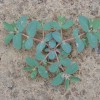 Erect and prostrate spurges are erect or upright annuals with branched stems. Leaves are opposite and not equal. Stems produce “milky sap.” A large number of spurge species occur in Florida. Reproduction occurs via seed. This 2-page fact sheet was written by J. Bryan Unruh, Darcy E. P. Telenko, Barry J. Brecke, and Ramon Leon, and published by the UF Department of Environmental Horticulture, December 2013.
Erect and prostrate spurges are erect or upright annuals with branched stems. Leaves are opposite and not equal. Stems produce “milky sap.” A large number of spurge species occur in Florida. Reproduction occurs via seed. This 2-page fact sheet was written by J. Bryan Unruh, Darcy E. P. Telenko, Barry J. Brecke, and Ramon Leon, and published by the UF Department of Environmental Horticulture, December 2013.
http://edis.ifas.ufl.edu/ep495
Category: Lawn & Garden
Erythrina leafminer (suggested common name); Leucoptera erythrinella Busck, 1900 (Insecta: Lepidoptera: Lyonetiidae)
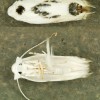 The erythrina leafminer is a member of the genus Leucoptera, which are leaf borers that can cause severe damage to plant crops, such as coffee or apples. Even though these moths are 1/20 to 1/10 the size of an average moth, they can cause serious damage. Leucoptera erythrinella is a pest of the coral bean and other members of the genus Erythrina. The larvae feed inside the leaves, making elaborate and characteristic mines, which from a distance appear to be discolorations of the leaf itself. This 5-page fact sheet was written by Andrei Sourakov, and published by the UF Department of Entomology and Nematology, January 2014.
The erythrina leafminer is a member of the genus Leucoptera, which are leaf borers that can cause severe damage to plant crops, such as coffee or apples. Even though these moths are 1/20 to 1/10 the size of an average moth, they can cause serious damage. Leucoptera erythrinella is a pest of the coral bean and other members of the genus Erythrina. The larvae feed inside the leaves, making elaborate and characteristic mines, which from a distance appear to be discolorations of the leaf itself. This 5-page fact sheet was written by Andrei Sourakov, and published by the UF Department of Entomology and Nematology, January 2014.
http://edis.ifas.ufl.edu/in1023
Tree Risk Assessment Methods: A Comparison of Three Common Evaluation Forms
 All trees pose some level of risk to nearby people, structures, and utilities. As trees age or become weakened by pests, disease, and/or other stresses, a tree owner or manager may need to decide what risk level he or she is willing to accept and what modifications may be needed. Experienced arborists can aid in this decision process by conducting a professional risk assessment that specifies the likelihood of whole or partial tree failure, the consequences of such a failure, and the potential targets affected. A variety of risk assessment methods have been developed to guide professionals through the tree inspection process. In North America, three risk assessment methods have gained the greatest acceptance among tree care professionals, municipal urban forestry programs, and government agencies. This 8-page fact sheet was written by Andrew K. Koeser, Gitta Hasing, Drew McLean, and Rob Northrop, and published by the UF Department of Environmental Horticulture, November 2013.
All trees pose some level of risk to nearby people, structures, and utilities. As trees age or become weakened by pests, disease, and/or other stresses, a tree owner or manager may need to decide what risk level he or she is willing to accept and what modifications may be needed. Experienced arborists can aid in this decision process by conducting a professional risk assessment that specifies the likelihood of whole or partial tree failure, the consequences of such a failure, and the potential targets affected. A variety of risk assessment methods have been developed to guide professionals through the tree inspection process. In North America, three risk assessment methods have gained the greatest acceptance among tree care professionals, municipal urban forestry programs, and government agencies. This 8-page fact sheet was written by Andrew K. Koeser, Gitta Hasing, Drew McLean, and Rob Northrop, and published by the UF Department of Environmental Horticulture, November 2013.
http://edis.ifas.ufl.edu/ep487
Impatiens Downy Mildew
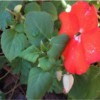 Downy mildew on impatiens is of great concern throughout Florida. Winters in south Florida provide high humidity paired with cool nights, creating ideal conditions for disease development. Downy mildews are caused by several different species of pathogens that tend to be plant-host specific. Plasmopara obducens is the pathogen that affects impatiens. Some literature indicates that nighttime temperatures of about 50 to 72°F favor downy mildew, but the disease has been reported on impatiens year round in south Florida. This 4-page fact sheet was written by L. Sanagorski, B. Schall, A.J. Palmateer, and N.A. Peres, and published by the UF Department of Plant Pathology, October 2013.
Downy mildew on impatiens is of great concern throughout Florida. Winters in south Florida provide high humidity paired with cool nights, creating ideal conditions for disease development. Downy mildews are caused by several different species of pathogens that tend to be plant-host specific. Plasmopara obducens is the pathogen that affects impatiens. Some literature indicates that nighttime temperatures of about 50 to 72°F favor downy mildew, but the disease has been reported on impatiens year round in south Florida. This 4-page fact sheet was written by L. Sanagorski, B. Schall, A.J. Palmateer, and N.A. Peres, and published by the UF Department of Plant Pathology, October 2013.
http://edis.ifas.ufl.edu/pp309
Faber’s Maple: Acer fabri
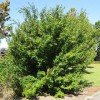 Faber's Maple is unlike the maples familiar to most people, as it does not have the typical three- or five-lobed leaves. Instead, the leaves of Faber's maple are unlobed, slender, and very glossy. Additionally, most people know the maple as a deciduous tree, dropping its leaves in fall, whereas Faber's maple is evergreen. This 2-page fact sheet was written by Gary W. Knox, and published by the UF Department of Environmental Horticulture, December 2013.
Faber's Maple is unlike the maples familiar to most people, as it does not have the typical three- or five-lobed leaves. Instead, the leaves of Faber's maple are unlobed, slender, and very glossy. Additionally, most people know the maple as a deciduous tree, dropping its leaves in fall, whereas Faber's maple is evergreen. This 2-page fact sheet was written by Gary W. Knox, and published by the UF Department of Environmental Horticulture, December 2013.
http://edis.ifas.ufl.edu/ep490
Apalachee Crapemyrtle: Lagerstroemia indica × fauriei 'Apalachee'
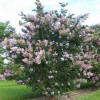 ‘Apalachee’ crapemyrtle is a small deciduous tree with lavender flowers, dark green leaves, and cinnamon-orange bark. Lagerstroemia indica x fauriei ‘Apalachee’ is one of the hybrids released in 1987 from the breeding program of the U.S. National Arboretum. It grows as an upright to vase-shaped multi-stemmed tree in USDA Cold Hardiness Zones 7a-9b. This 2-page fact sheet was written by Gary W. Knox, and published by the UF Department of Environmental Horticulture, December 2014.
‘Apalachee’ crapemyrtle is a small deciduous tree with lavender flowers, dark green leaves, and cinnamon-orange bark. Lagerstroemia indica x fauriei ‘Apalachee’ is one of the hybrids released in 1987 from the breeding program of the U.S. National Arboretum. It grows as an upright to vase-shaped multi-stemmed tree in USDA Cold Hardiness Zones 7a-9b. This 2-page fact sheet was written by Gary W. Knox, and published by the UF Department of Environmental Horticulture, December 2014.
http://edis.ifas.ufl.edu/ep491
Soil Testing Information Sheets
Use these forms to send samples to the UF/IFAS Extension Soil Testing Laboratory
- Commercial Sod Test Form
- Container Media Test Form
- Landscape and Vegetable Garden Test Form
- Livestock Waste Testing Form
- Nutrient Testing Form for Bahia Pastures
- Phosphorus Index Test Form
- Pine Nursery Soil Test Form
- Plant Tissue Test Form
- Producer Citrus Test Form
- Producer Soil Test Form
- Water Test Form
http://edis.ifas.ufl.edu/topic_soil_testing_information_sheets
Hojas de Informacion de Analisis de Suelos
Llena estas formas para enviar las muestras al UF/IFAS Laboratorio de Servicios Analíticos Laboratorio de Extensión de Análisis de Suelos
- Análisis de Agua
- Análisis de Estiércol
- Análisis de Medios de Macetas
- Análisis de Nutrientes para Pastos de Bahía
- Análisis de Suelo para Césped Comercial
- Análisis de Suelo de Jardines y Huertos
- Análisis de Suelo de Pinos
- Análisis de Suelo para Productores
- Análisis de Tejido Vegetal
- Análisis para Productor de Cítricos
- Índice de Fósforo
http://edis.ifas.ufl.edu/topic_hojas_de_informacion_de_analisis_de_suelos
Conducting a Blue Dye Demonstration to Teach Irrigation and Nutrient Management Principles in a Residential Landscape
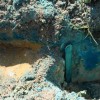 This publication discusses the “blue dye” test, which is one way that Extension professionals can show homeowners how water and nutrients move through the soil following irrigation. The information should be useful for county agents to demonstrate basic irrigation and nitrogen management practices and their effects on nitrate-nitrogen (N) leaching. This 4-page fact sheet was written by George Hochmuth, Laurie Trenholm, Esen Momol, Don Rainey, Claire Lewis, and Brian Niemann, and published by the UF Department of Soil and Water Science, November 2013.
This publication discusses the “blue dye” test, which is one way that Extension professionals can show homeowners how water and nutrients move through the soil following irrigation. The information should be useful for county agents to demonstrate basic irrigation and nitrogen management practices and their effects on nitrate-nitrogen (N) leaching. This 4-page fact sheet was written by George Hochmuth, Laurie Trenholm, Esen Momol, Don Rainey, Claire Lewis, and Brian Niemann, and published by the UF Department of Soil and Water Science, November 2013.
http://edis.ifas.ufl.edu/ss594
The Role of Soil Management in Minimizing Water and Nutrient Losses from the Urban Landscape
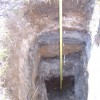 Soil is the most important building block of a healthy, attractive landscape, serving many important physical, chemical, and biological functions. Soil provides a physical substrate for plant support and holds nutrients and water for plant use. It also facilitates groundwater recharge (water moving from surface water to groundwater) and provides long-term storage for organic matter. Soil also provides a habitat for microorganisms that aid in the transformation and availability of nutrients. Soil is an integral part of any ecosystem, but urbanization often changes soils in ways that negatively affect plant development. Soils in urban areas may have reduced water infiltration, resulting in increased runoff and increased potential for nutrient losses. Homeowners in urban areas often overcompensate for poor planting conditions by applying inappropriate amounts of fertilizer and water. These practices eventually lead to nutrient losses through stormwater runoff or soil leaching, and these lost nutrients negatively impact groundwater and ecosystems in nearby springs, streams, and water bodies. This 6-page fact sheet was written by George Hochmuth, Laurie Trenholm, Esen Momol, Don Rainey, Claire Lewis, and Brian Niemann, and published by the UF Department of Soil and Water Science, November 2013.
Soil is the most important building block of a healthy, attractive landscape, serving many important physical, chemical, and biological functions. Soil provides a physical substrate for plant support and holds nutrients and water for plant use. It also facilitates groundwater recharge (water moving from surface water to groundwater) and provides long-term storage for organic matter. Soil also provides a habitat for microorganisms that aid in the transformation and availability of nutrients. Soil is an integral part of any ecosystem, but urbanization often changes soils in ways that negatively affect plant development. Soils in urban areas may have reduced water infiltration, resulting in increased runoff and increased potential for nutrient losses. Homeowners in urban areas often overcompensate for poor planting conditions by applying inappropriate amounts of fertilizer and water. These practices eventually lead to nutrient losses through stormwater runoff or soil leaching, and these lost nutrients negatively impact groundwater and ecosystems in nearby springs, streams, and water bodies. This 6-page fact sheet was written by George Hochmuth, Laurie Trenholm, Esen Momol, Don Rainey, Claire Lewis, and Brian Niemann, and published by the UF Department of Soil and Water Science, November 2013.
http://edis.ifas.ufl.edu/ss593
Maximizing the Benefits of Reclaimed Water for Irrigating the Landscape and Protecting the Environment
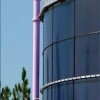 Reclaimed water is water that has been treated in municipal wastewater facilities and is safe to use for designated purposes, including residential landscape irrigation. “Water reuse” is the term used to describe the beneficial application of reclaimed water. Approximately 663 million gallons of reclaimed water are used daily in Florida. Florida is a national leader in using reclaimed water, and in 2006 Florida’s reuse program received the first U.S. Environmental Protection Agency Water Efficiency Leader Award. Using reclaimed water in Florida meets a state objective for conserving freshwater supplies, and preserves the water quality of rivers, streams, lakes, and aquifers. This publication discusses the benefits of using reclaimed water to irrigate the landscape and explains how using reclaimed water helps to protect the environment. This 4-page fact sheet was written by George Hochmuth, Laurie Trenholm, Don Rainey, Esen Momol, Claire Lewis, and Brian Niemann, and published by the UF Department of Soil and Water Science, November 2013.
Reclaimed water is water that has been treated in municipal wastewater facilities and is safe to use for designated purposes, including residential landscape irrigation. “Water reuse” is the term used to describe the beneficial application of reclaimed water. Approximately 663 million gallons of reclaimed water are used daily in Florida. Florida is a national leader in using reclaimed water, and in 2006 Florida’s reuse program received the first U.S. Environmental Protection Agency Water Efficiency Leader Award. Using reclaimed water in Florida meets a state objective for conserving freshwater supplies, and preserves the water quality of rivers, streams, lakes, and aquifers. This publication discusses the benefits of using reclaimed water to irrigate the landscape and explains how using reclaimed water helps to protect the environment. This 4-page fact sheet was written by George Hochmuth, Laurie Trenholm, Don Rainey, Esen Momol, Claire Lewis, and Brian Niemann, and published by the UF Department of Soil and Water Science, November 2013.
http://edis.ifas.ufl.edu/ss587
Managing Landscape Irrigation to Avoid Soil and Nutrient Losses
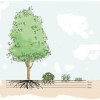 Proper irrigation management is critical to conserve and protect water resources and to properly manage nutrients in the home landscape. How lawns and landscapes are irrigated directly impacts the natural environment, so landscape maintenance professionals and homeowners must adopt environmentally-friendly approaches to irrigation management. After selecting the right plant for the right place, water is the next critical factor to establish and maintain a healthy lawn and landscape. Fertilization is another important component of lawn and landscape maintenance, and irrigation must be applied correctly, especially following fertilization, to minimize potential nutrient losses. This publication supplements other UF/IFAS Extension publications that also include information on the role of soil and the root zone in irrigation management. This publication is designed to help UF/IFAS Extension county agents prepare materials to directly address nutrient losses from lawns and landscapes caused by inadequate irrigation management practices.This 6-page fact sheet was written by George Hochmuth, Laurie Trenholm, Don Rainey, Esen Momol, Claire Lewis, and Brian Niemann, and published by the UF Department of Soil and Water Science, October 2013.
Proper irrigation management is critical to conserve and protect water resources and to properly manage nutrients in the home landscape. How lawns and landscapes are irrigated directly impacts the natural environment, so landscape maintenance professionals and homeowners must adopt environmentally-friendly approaches to irrigation management. After selecting the right plant for the right place, water is the next critical factor to establish and maintain a healthy lawn and landscape. Fertilization is another important component of lawn and landscape maintenance, and irrigation must be applied correctly, especially following fertilization, to minimize potential nutrient losses. This publication supplements other UF/IFAS Extension publications that also include information on the role of soil and the root zone in irrigation management. This publication is designed to help UF/IFAS Extension county agents prepare materials to directly address nutrient losses from lawns and landscapes caused by inadequate irrigation management practices.This 6-page fact sheet was written by George Hochmuth, Laurie Trenholm, Don Rainey, Esen Momol, Claire Lewis, and Brian Niemann, and published by the UF Department of Soil and Water Science, October 2013.
http://edis.ifas.ufl.edu/ss586
Happy Arbor Day!
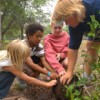 Florida has celebrated Arbor Day since 1886 and has one of the first Arbor Day celebrations in the nation, on the third Friday in January. Over 200 communities in Florida celebrate Arbor Day, either as a stand-alone event or in conjunction with some other occasion. Check with your local city officials or school department to see how your community is celebrating Arbor Day.
Florida has celebrated Arbor Day since 1886 and has one of the first Arbor Day celebrations in the nation, on the third Friday in January. Over 200 communities in Florida celebrate Arbor Day, either as a stand-alone event or in conjunction with some other occasion. Check with your local city officials or school department to see how your community is celebrating Arbor Day.
EDIS Arbor Day topic
UF/IFAS Solutions: Arbor Day
Sri Lankan weevil Myllocerus undecimpustulatus undatus Marshall
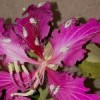 Myllocerus undecimpustulatus undatus Marshall, the Sri Lankan weevil, is a plant pest with a wide range of hosts. This weevil spread from Sri Lanka into India and then Pakistan where many subspecies of Myllocerus undecimpustulatus Faust are considered pests of more than 20 crops. In the United States, the Sri Lankan weevil was first identified on Citrus sp. in Pompano Beach a city in Broward County Florida. Three specimens were identified by Dr. Charles W. O’Brien, first as Myllocerus undecimpustulatus, a species native to southern India, and then again as Myllocerus undatus Marshall native to Sri Lanka, finally as Myllocerus undecimpustulatus undatus Marshall to show its status as a subspecies. This 4-page fact sheet was written by Anita Neal, and published by the UF Department of Entomology and Nematology, November 2013.
Myllocerus undecimpustulatus undatus Marshall, the Sri Lankan weevil, is a plant pest with a wide range of hosts. This weevil spread from Sri Lanka into India and then Pakistan where many subspecies of Myllocerus undecimpustulatus Faust are considered pests of more than 20 crops. In the United States, the Sri Lankan weevil was first identified on Citrus sp. in Pompano Beach a city in Broward County Florida. Three specimens were identified by Dr. Charles W. O’Brien, first as Myllocerus undecimpustulatus, a species native to southern India, and then again as Myllocerus undatus Marshall native to Sri Lanka, finally as Myllocerus undecimpustulatus undatus Marshall to show its status as a subspecies. This 4-page fact sheet was written by Anita Neal, and published by the UF Department of Entomology and Nematology, November 2013.
http://edis.ifas.ufl.edu/in1016
Rugose spiraling whitefly Aleurodicus rugioperculatus Martin (Hemiptera: Aleyrodidae)
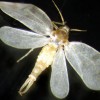 A new addition on the list of whitefly species found in Florida, Aleurodicus rugioperculatus Martin, was originally called the gumbo limbo spiraling whitefly, but is now named the rugose spiraling whitefly. Being a fairly new species to science – identified less than a decade ago, not much information is available about this pest. It is an introduced pest, endemic to Central America, and was reported for the first time in Florida from Miami-Dade County in 2009. Since then it has become an escalating problem for homeowners, landscapers, businesses, and governmental officials throughout the southern coastal counties of Florida. Feeding by this pest not only causes stress to its host plant, but the excessive production of wax and honeydew creates an enormous nuisance in infested areas. The presence of honeydew results in the growth of fungi called sooty mold, which then turns everything in the vicinity covered with honeydew black with mold. This 5-page fact sheet was written by Vivek Kumar, Cindy L. McKenzie, Catharine Mannion, Ian Stocks, Trevor Smith, and Lance S. Osborne, and published by the UF Department of Entomology and Nematology, October 2013.
A new addition on the list of whitefly species found in Florida, Aleurodicus rugioperculatus Martin, was originally called the gumbo limbo spiraling whitefly, but is now named the rugose spiraling whitefly. Being a fairly new species to science – identified less than a decade ago, not much information is available about this pest. It is an introduced pest, endemic to Central America, and was reported for the first time in Florida from Miami-Dade County in 2009. Since then it has become an escalating problem for homeowners, landscapers, businesses, and governmental officials throughout the southern coastal counties of Florida. Feeding by this pest not only causes stress to its host plant, but the excessive production of wax and honeydew creates an enormous nuisance in infested areas. The presence of honeydew results in the growth of fungi called sooty mold, which then turns everything in the vicinity covered with honeydew black with mold. This 5-page fact sheet was written by Vivek Kumar, Cindy L. McKenzie, Catharine Mannion, Ian Stocks, Trevor Smith, and Lance S. Osborne, and published by the UF Department of Entomology and Nematology, October 2013.
http://edis.ifas.ufl.edu/in1015
Drying and Preserving Plant Materials for Decorative Uses
 Dried and preserved plant materials are popular for home decor. Dried arrangements can preserve the graceful lines, textures, and colors of flowers and foliage with a subtle and gently aged appearance. This 14-page fact sheet was written by Sydney Park Brown, Patricia White, Benny Tjia, Marion R. Sheehan, and published by the UF Department of Environmental Horticulture, November 2013.
Dried and preserved plant materials are popular for home decor. Dried arrangements can preserve the graceful lines, textures, and colors of flowers and foliage with a subtle and gently aged appearance. This 14-page fact sheet was written by Sydney Park Brown, Patricia White, Benny Tjia, Marion R. Sheehan, and published by the UF Department of Environmental Horticulture, November 2013.
http://edis.ifas.ufl.edu/ep004
Seed Sources for Florida Home-grown Vegetables
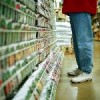 The right vegetable varieties can make a big difference in the success of a home vegetable garden. Although a huge selection of seeds and transplants are available through garden centers, seed catalogs, and the internet, choosing what to buy can be confusing. Some of the best varieties for Florida gardens and seed suppliers that currently sell them are listed in this 6-page fact sheet written by Ed Thralls, Sydney Park Brown, and Ed Paulson, and published by the UF Department of Environmental Horticulture, November 2013.
The right vegetable varieties can make a big difference in the success of a home vegetable garden. Although a huge selection of seeds and transplants are available through garden centers, seed catalogs, and the internet, choosing what to buy can be confusing. Some of the best varieties for Florida gardens and seed suppliers that currently sell them are listed in this 6-page fact sheet written by Ed Thralls, Sydney Park Brown, and Ed Paulson, and published by the UF Department of Environmental Horticulture, November 2013.
http://edis.ifas.ufl.edu/ep486
Using Reclaimed Water to Irrigate Turfgrass: Lessons Learned from Research with Phosphorus
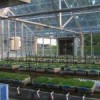 Municipal wastes are treated at a wastewater treatment facility to produce biosolids and reclaimed water. Reclaimed water treated by filtration and chlorination is safe to use for designated purposes, such as residential landscape irrigation. Florida began using reclaimed water in 1966, and it is a leading state for using reclaimed water. Approximately 660 million gallons of reclaimed water are used every day in Florida, and the state encourages using reclaimed water as an alternative water source to reduce the pressure on potable water supplies. This 3-page fact sheet summarizes the results of a recent research project and provides research-based information for improving nutrient and water management with reclaimed water irrigation of turfgrass. Written by George Hochmuth, Jinghua Fan, Jason Kruse, and Jerry Sartain, and published by the UF Department of Soil and Water Science, October 2013.
Municipal wastes are treated at a wastewater treatment facility to produce biosolids and reclaimed water. Reclaimed water treated by filtration and chlorination is safe to use for designated purposes, such as residential landscape irrigation. Florida began using reclaimed water in 1966, and it is a leading state for using reclaimed water. Approximately 660 million gallons of reclaimed water are used every day in Florida, and the state encourages using reclaimed water as an alternative water source to reduce the pressure on potable water supplies. This 3-page fact sheet summarizes the results of a recent research project and provides research-based information for improving nutrient and water management with reclaimed water irrigation of turfgrass. Written by George Hochmuth, Jinghua Fan, Jason Kruse, and Jerry Sartain, and published by the UF Department of Soil and Water Science, October 2013.
http://edis.ifas.ufl.edu/ss592
Alternatives to Invasive Plants Commonly Found in South Florida Landscapes
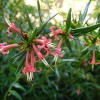 Based on years of UF/IFAS research producing and trialing cultivars, this 5-page fact sheet lists native and non-invasive, non-native ornamentals as alternatives to invasive plants commonly used in Florida landscapes. Only plants considered to be generally available in the nursery trade are listed. Alternative plants are similar to respective invasive plants as much as possible in terms of size, habit, texture, and flower color. Written by Gary W. Knox, Sandra B. Wilson, Zhanao Deng, and Rosanna Freyre, and published by the UF Department of Environmental Horticulture, September 2013.
Based on years of UF/IFAS research producing and trialing cultivars, this 5-page fact sheet lists native and non-invasive, non-native ornamentals as alternatives to invasive plants commonly used in Florida landscapes. Only plants considered to be generally available in the nursery trade are listed. Alternative plants are similar to respective invasive plants as much as possible in terms of size, habit, texture, and flower color. Written by Gary W. Knox, Sandra B. Wilson, Zhanao Deng, and Rosanna Freyre, and published by the UF Department of Environmental Horticulture, September 2013.
http://edis.ifas.ufl.edu/ep483
Using Audience Commitment to Increase Behavior Changes in Sustainable Landscaping
 Participants in an Extension rain barrel workshop who said they would inspect their irrigation systems might begin to see themselves as people who use water wisely. Their perception of themselves as conservationists is strengthened with each new action. That makes them more likely to agree to an action that leads to an even bigger water savings. Research has shown that commitments can increase the percentage of people who will adopt a new behavior and give up an old one. This 4-page fact sheet was written by Laura A. Sanagorski and Paul Monaghan, and published by the UF Department of Agricultural Education and Communication, September 2013.
Participants in an Extension rain barrel workshop who said they would inspect their irrigation systems might begin to see themselves as people who use water wisely. Their perception of themselves as conservationists is strengthened with each new action. That makes them more likely to agree to an action that leads to an even bigger water savings. Research has shown that commitments can increase the percentage of people who will adopt a new behavior and give up an old one. This 4-page fact sheet was written by Laura A. Sanagorski and Paul Monaghan, and published by the UF Department of Agricultural Education and Communication, September 2013.
http://edis.ifas.ufl.edu/wc154